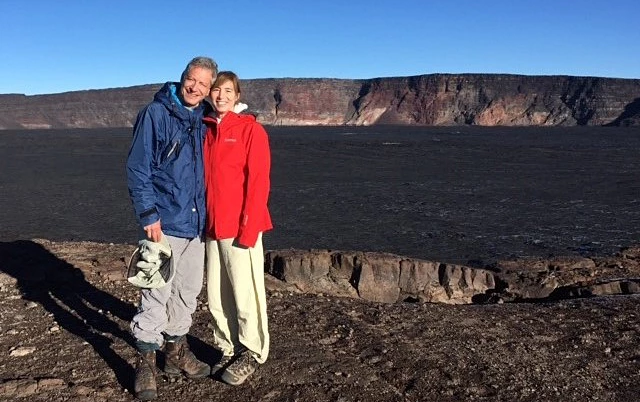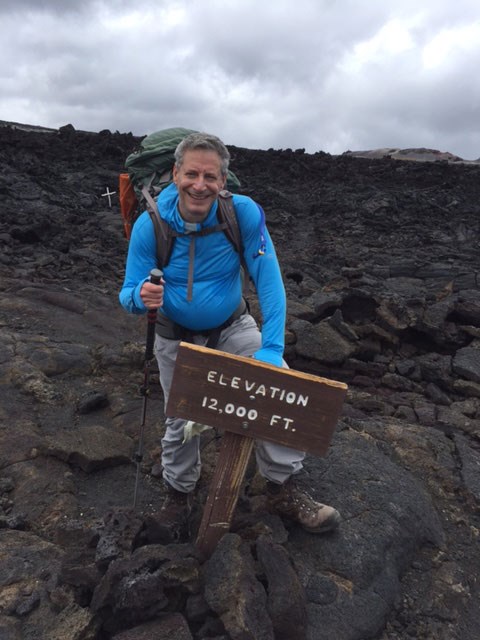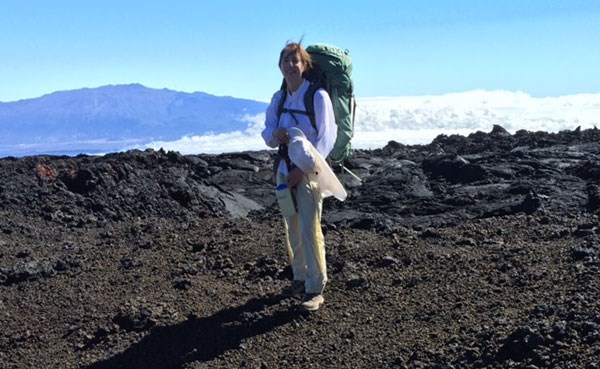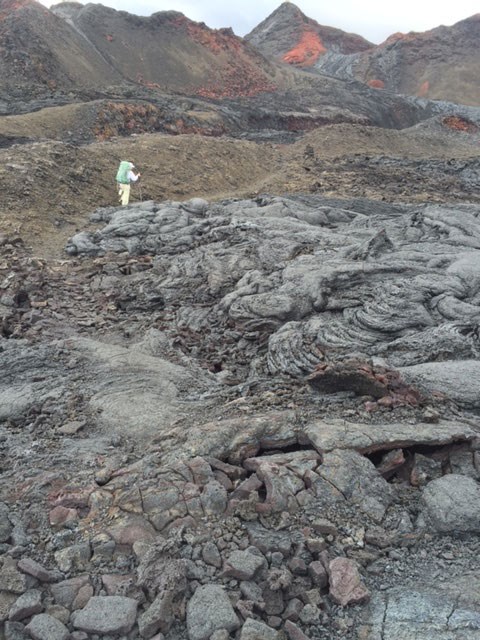|
Submitted by Alisa Schreier


In mid- August 2015 my husband and I climbed the Mauna Loa Trail via the Red Cabin and out via the Observatory Trail. Initially we had planned a 3 night/4 day in and out hike from the trailhead to the Red Cabin and Summit Cabin, and then back to our car. However, a hurricane closed the backcountry and due to time constraints we had to change our plans. In order to do the traverse, staying out only 2 nights, we hired a cab for approximately $300 to pick us up at the Observatory and return us to our car at the trailhead (Thank you Roy at DaBest Taxi in Hilo). While we were initially disappointed by this change, it turned out to be the best way to do the hike. In our experience, one of the most attractive aspects of the hike was the near solitude that this hike provides. Before we got to Hawaii we had fretted over the possibility that the hike was so in demand that we would not be able to get a backcountry permit. However, during the three days on the trail we encountered only 2 other solo backpackers and had both cabins almost to ourselves. We also found that the descriptions of the hike in the various travel guide books truly understated the uniqueness and the extreme beauty of the hike, especially between Red Hill Cabin and the summit area. The first leg, between the trailhead and Red Cabin, was exciting in that with each step we found ourselves being able to see the Kilauea crater from above. Of course we were also focused on adjusting to the altitude as we had started that morning at sea-level near Kona, moving to the trailhead at 7,000 feet, and then slogging it out to the ultimate height of the cabin at 10,000. We were thrilled to find the Red Cabin hidden around the corner of the last cairn, finishing at the outside approximation of the journey at 8 hours. 
We woke up early the next morning, sure that at our slow-but-steady mile an hour pace, the 11.5 mile hike would take us a full 12 hours. After an inauspicious start with a leaking camelback and the failure of our camera batteries, we began the next leg. While the guidebooks had noted how diverse the form and colors of the lava terrain was, we were unprepared for the immense beauty and other-worldliness of the section just beyond the Red Cabin, and all our frustrations were quickly forgotten. At times we were amazed to feel that we were on another planet, or the moon;some sections so primordial and so special that even a science fiction movie could not recreate the detailed beauty of the scene. We exclaimed over each new variation of lava - from jagged rocky sections, to smooth, almost polished, sections, to the clear sight of how the black lava flowed like a river, overlapping or right up against a light colored mound. Alternately we were struck by the gorgeous contrast of colors. Reds, golds, purples, blues, rust, browns, blacks - so rich and vibrant, that we were reminded that nature is more miraculous than anything man can create. And as we walked we were constantly overwhelmed by the size of Mauna Kea across the way, and thrilled to be looking down on the clouds with their magnificent display. 
We suspect that the understated descriptions of the trail arises from the extreme difficulty of the hike, which should not be discounted. Even though we - surprisingly - found the altitude manageable, and the trail very well marked, almost every step was on boulders and rocks, and the altitude gain was approximately 6,500 feet and a sustained amount of hiking at 12,000 and 13,000 feet. We consider ourselves extremely lucky on many counts to have been able to hike the trail but especially because the weather was overall good. While we almost faced a whiteout condition, and there was a small amount of rain, we recognize that the very difficult hike could be made even more challenging by heavy rain, wind, and snow. Another inadequately described feature of the hike is that there are many sites to camp along the way - albeit without water. Some of them, in fact, are in beautiful locations. For example, there's a dramatic cone at approximately 11,500 feet that has a man-made rock wall around a sandy floor. One thing extremely accurately described by the guidebooks is that the last mile to the Mauna Loa cabin is the longest mile in Hawaii. Once you have traveled the 9.5 miles from Red Cabin to the junction of the Mauna Loa cabin trail and summit trail, you have an amazingly easy stroll into the bottom of the caldera. You can see the cairns clearly marking the way and then you see a dramatic sub-caldera to the left. Then you start to climb to the cabin over extremely challenging footing, and as the sun was setting, we kept being disappointed that the cabin was not after the next turn or cairn. But we made it to the cabin just before sunset and got to glimpse the full extent of the caldera as the cabin is sited just opposite the Mauna Loa summit. We want to close with the following: We are extremely experienced backpackers and have all the necessary equipment. Having said that, we are also both in our fifties, thus, younger backpackers may not find it as challenging but surely will find it as fantastic a hike as we did. |
Last updated: July 27, 2016
